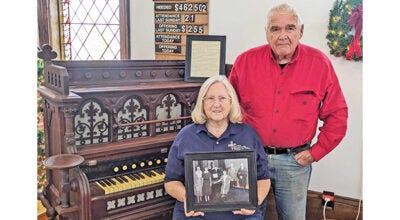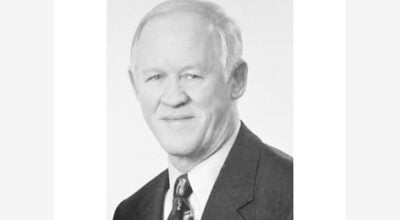Niles buying bank for City Hall
Published 5:28 pm Wednesday, May 2, 2012
Bank on Niles getting a new City Hall in three months.
In fact, it was a bank, the three-floor Bank of America, 333 N. Second St., which closed April 29, 2011. It has been entirely vacant since February.
The 1973 building, with a drive-through for paying bills and taxes or processing voter registrations, sported a big, blue “sold” sign Wednesday afternoon, though it may be another 45 days before it’s a done deal.
The city council discussed acquiring an unidentified location in closed session April 23.
City Administrator Ric Huff told the Star Wednesday, “We were authorized to bid on a piece of property, which we did today. We were the prevailing bidder and we entered into a purchase agreement with the property owner. There don’t seem to be any looming hiccups in the process, but we don’t have anything signed yet.
“That building has been looked at to consolidate city services in one location for a number of years,” he said. “At other opportunities when it became available, it wasn’t financially within the grasp of the city to do anything. I wouldn’t say we were actively looking, but always aware of any possibilities, which may come up. It came up again, so we took a look and feel it will fit our needs quite well. If this deal goes all the way through like we expect, it gives us the opportunity to consolidate our services under one roof, and our citizens will be better served. Last winter we had a couple of elderly people fall in back of this building.”
Huff said city services delivery is divided between Chapin Mansion — the current location of City Hall — and the finance department, building department and utilities.
“As a city administrator, I need to talk to my finance director, and they’re a block and a half away” in the old post office, Huff said. “We’re pretty spread out.”
Huff is no stranger to a massive move. As police chief, he was involved with the transition into the law enforcement complex, which “went off without a minute of down time. I think we can do it again.”
Huff estimated the cost plus normal acquisition fees at $253,000. The building was appraised for $765,000. To replace it with new construction could cost $5 million.
Offices would occupy the top two floors, with public functions on the first.
As for the current 14,000-square-foot City Hall, a longstanding desire for another museum could be realized.
While Fort St. Joseph Museum houses artifacts, city employees are peculiarly aware that they work inside a de facto museum, which could be furnished as a house with period furniture.
“It’s very expensive to maintain,” Huff said. “From a government standpoint, the type of funds we can use is very restricted. There are a lot of grants we don’t qualify for because we’re using it as a City Hall for commercial operations. Once we make it a museum, then we start qualifying for historical grants and federal grants.
“I suspect some people will say the city should have spent $253,000 on something else, but we’re looking at something that we’re going to move into for the next 40 to 60 years. When you put that cost out over that time period, it’s pretty minimal for housing all of our city services.”
“It’s kind of interesting working here,” Huff added, “because we allow people to wander through this amazing building at will, so you can be working away while people walk around your office looking at the woodwork.”
Current city hall a bargain at $300
Niles’ current city hall in Chapin Mansion, a Queen Anne-style house completed in 1884, was the Henry Austin Chapin (1813-1898) family home until 1902.
In 1932, Niles bought the property at auction for $300. The Chapin grandchildren stipulated it be used only for civic purposes.
Built of local brick and terra-cotta tile, the interior is ornamented with leaded-glass windows and transoms, handcarved woodwork and stenciled ceilings.
In 1939, the Works Progress Administration (WPA) joined the carriage house to another outbuilding, creating Fort St. Joseph Museum, which holds more than 10,000 items, including fort and Potawatomi Indian artifacts, local memorabilia and a collection of drawings by Chief Sitting Bull.
Chapin spent most of his early life in Ohio. He married Ruby Nooney in 1836 and settled in Edwardsburg.
In 1846, Chapin and S.S. Griffin opened the first general store in Niles.
Family capital came from mining iron ore in Michigan’s Upper Peninsula.






